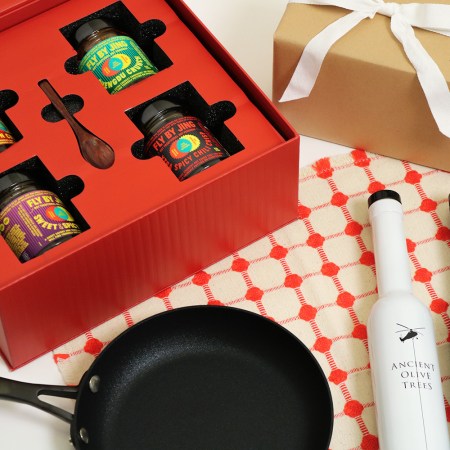Nota bene: All products in this article are independently selected and vetted by InsideHook editors. If you buy something, we may earn an affiliate commission.
Before Sweden churned out its first minimalist desk and Paul Bunyan fell his first tree, there was Hults Bruk.
Founded in 1697, the forge counts itself a leader in the long and storied line of Scandinavian axe makers, including the top-shelf Gränsfors Bruk and the now-defunct bushcraft favorite Wetterlings. But Hults Bruk stands out amongst them by virtue of having about a 200-year head start, and among any axe factory for being in continuous operation for more than 320 years.
Despite this history, there’s a good chance you haven’t heard of them, because Hults Bruk didn’t officially come stateside until 2015. (Consider it the Best Made effect, which is like the butterfly effect but with heritage tools.) But they recently released a brand new swinger called the Sarek Splitting Axe — part of their “premium” line of U.S.-specific axes (there’s also a less expensive “standard” range) —, so we thought we’d take a moment to look back on why, exactly, you should consider a $149 wood splitter when Home Depot sels axes for $25.
Below, you’ll find five quintessential fellers, splitters, hatchets and throwing axes, paired with five tales from Hults Bruk’s history that’ll go well alongside the fire you build with all the wood you split.
Buyer beware: These aren’t safety axes. These Swedes ship ’em sharp enough to shave.
1. Hults Bruk started in the shipbuilding business, not axes
Wherever you find a write-up about these Swedes, chances are it’ll include a sentence along the lines of, “the Hults factory has been turning out axes since 1697.” But that’s not actually the case. The first goods Hults Bruk hand-forged were nails for shipbuilding and iron bars. Axes and other hand tools came into the mix relatively quickly, but it wasn’t until the 1870s that axes became “a major part” of their production.
The Sarek Splitting Axe
Sitting smack dab between your favorite felling axe and splitting maul, the Sarek is a one-and-done tool for those who spend most of their time chopping wood. The 3.5-lb. hand-forged Swedish steel head features a straight blade and sits on an American hickory handle.
2. The secret to Hults Bruk’s success? A woman.
While it was Jacob Reenstierna who founded the company, Hults Bruk became a forge to be reckoned with after a woman named Brigitta Wallrave bought it from Reenstierna’s widow in 1732 and brought it into “a period of growth.” According to the company, it was under Wallrave’s ownership that axes were first manufactured, along with many other products including barbed iron, bolt iron and spades.
The Akka Forester’s Axe
The ideal backwoods companion. The Akka’s linseed oil-treated hickory handle makes hacking at branches a breeze, and the finger notch turns it into a two-in-one carving tool. Comes with a leather sheath.
3. The other secret to their success? American ingenuity.
The other area Hults Bruk can hold its own besides steel forging? Fake news. Back in 2015, they announced their axes were “now available in the U.S.” But as it turns out, Gunnar Ekelund, the company’s owner starting in 1886, was responsible for their first American foray. He traveled across the pond in 1887 to acquire the distinctly American knowledge and machinery needed to modernize his factory (which led to the boom in axe production), and also to “open up a new market.” So in fact, the first time Hults Bruk axes were sold in the U.S. was the late 1880s.
The American Felling Axe
Made in conjunction with survival expert Dave Canterbury, this straight-handled five-pounder is designed for dropping trees lesser men would take a chainsaw to.
4. The axe-making methods have stayed the same since the late 1800s
During Ekelund’s tenure, he faced a predicament: Hults Bruk didn’t have a viable long-term business model. Thus, he decided to become a specialist manufacturer (and we all know which speciality he decided on). After his trip to America, as well as England and Belgium, he oversaw new forging methods, “which are basically the same methods used in the works today.” So while technically these aren’t 300-year-old techniques, they are over 100-years-old, and pound-for-pound as reliable. At least in this case, they do make ‘em like they used to.
The Jonaker Hatchet with Sheath and Duluth Pack Holder
The smallest hatchet Hults produces, aka little baby cleaver. It comes out to a whole 1.5-lbs. and 9.5 inches, perfect for wearing on your belt thanks to the included Duluth Pack holder.
5. The founder of Hults Bruk was an immigrant
For all this talk of Swedish ironworking, Reenstierna was actually a Dutchman. Nonetheless, in addition to his factory, he became governor of Halland and an adviser to King Charles XII of Sweden. As the company notes, “At this time, immigrants’ ideas and initiatives meant much to Sweden’s business community.”
The Motala Double Bit Axe
The secret to these axes lies in the hand grinding and tempered zones, and that holds true even in this Game of Thrones-worthy heritage piece. While you can use it as a tool, the Motala’s main function is as a throwing axe.
—-
Main photo courtesy Hults Bruk, © Roman Kahler
We've put in the work researching, reviewing and rounding up all the shirts, jackets, shoes and accessories you'll need this season, whether it's for yourself or for gifting purposes. Sign up here for weekly style inspo direct to your inbox.

















